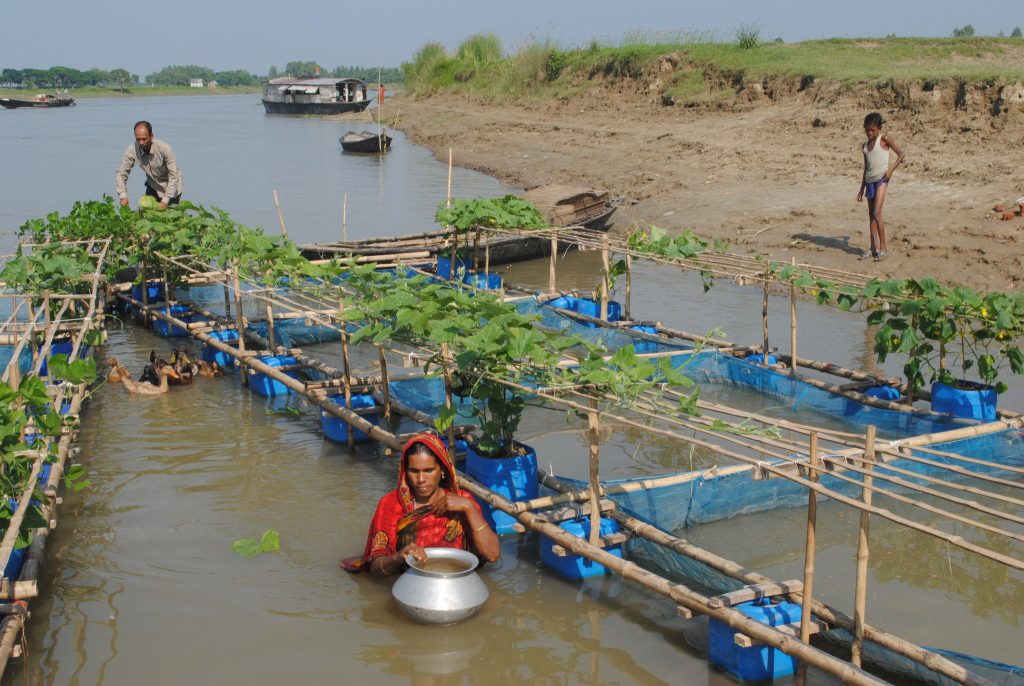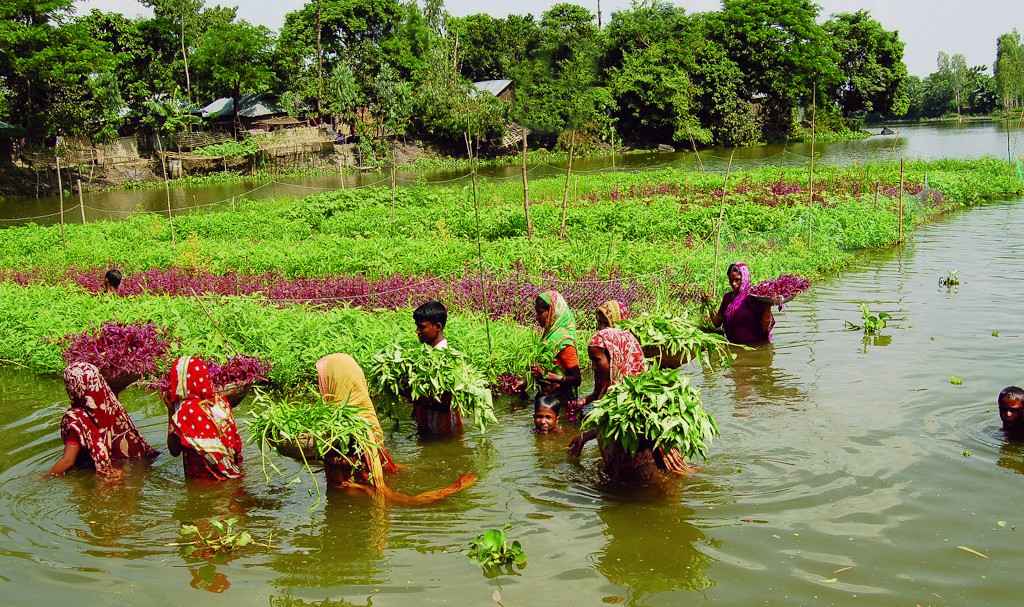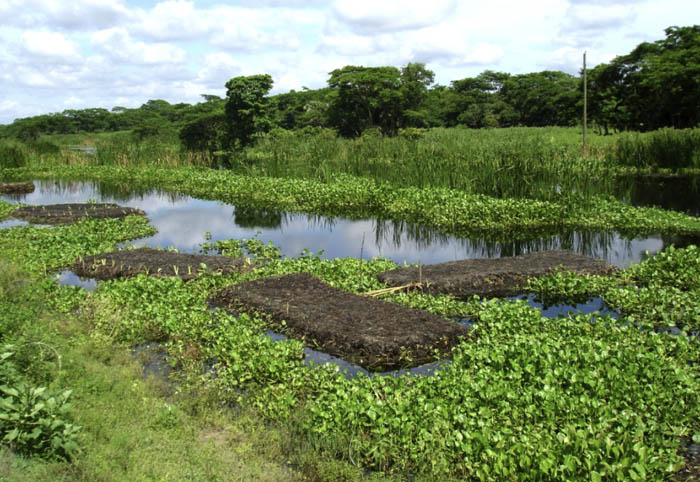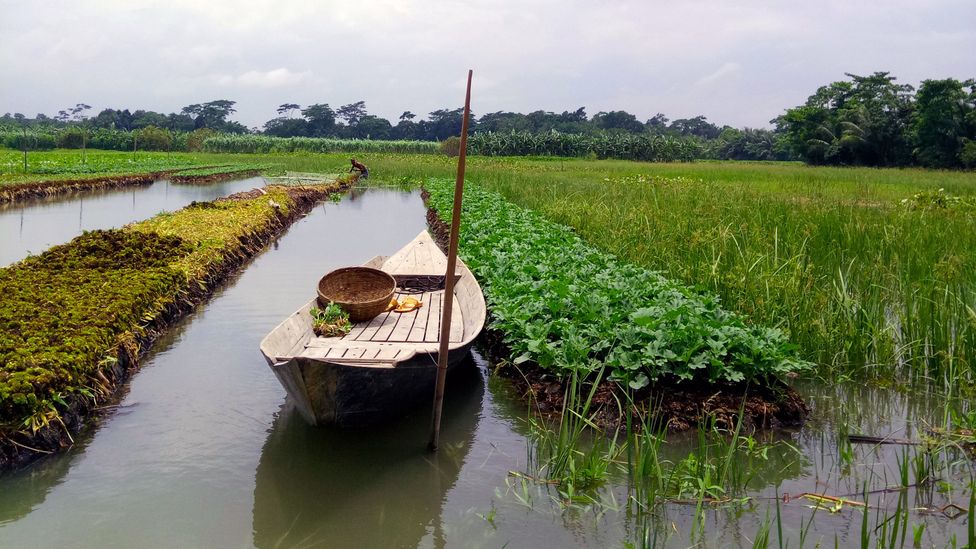What is the Floating Gardens of Bangladesh?
A floating garden is a way of planting on the ground raised (as on the surface of a lake) by rafts of intertwined branches or other floating support, for agricultural purposes. Almost 50% of Bangladesh falls under the category of wetlands, mostly in rivers and floodplains. The floating garden is a traditional agricultural practice of Bangladesh, in which floating rafts are made out of plant materials in waterlogged areas to raise seedlings and grow vegetables in monsoon months.
Where Does the Floating Garden Take Place?
This traditional agricultural method originated in Bangladesh’s south-central wetlands, specifically in the districts of Barisal, Gopalganj, Madaripur, and Pirojpur. This method of agriculture is most common in these areas. Farmers collect grasses such as water weeds or paddy stalks in this area during the monsoon season, place them on stagnant water, beat them, and make rafts. On these organic beds, they sow seedlings, which they then plant in flooded areas of the villages.
Since about 2000, numerous NGOs and government organizations in Bangladesh have actively promoted this indigenous system, particularly in the country’s wetlands in the south (above districts and Jessor), north (Gaibandha, Nilphamari, and Rangpur districts), and north-east (Kishorganj, Hobiganj, Netrokona, and Sunamganj districts).
How do floating gardens work?

The floating gardens are made by weaving and layering the plants, which are typically three feet deep to make a raised-bed garden design that enables the plants to function as a growing base as they float. Then Vegetables are planted inside these rafts, and as the plant roots slowly decompose, they release nutrients, which help grow the vegetables. Generally, the farmer will get 16 kg of vegetables back within 3-4 months. The operating cost of this technology is low and making it ideal for small-scale farmers.
Is it Promoting in Bangladesh?

Floating gardens of Bangladesh are a great method of growing vegetables. The government of Bangladesh NGOs and agencies has been promoting floating horticulture since 2000. For communities in Bangladesh, this means traditional agriculture, in which okra, gourd, spinach, aubergine, and spices including turmeric and ginger can also be grown. A farmer also has the choice of raising saplings to expand their floating garden. In southern Bangladesh, where wetlands are most widespread, Practical Action has also developed cages, in which fish can be farmed. It provides additional income and nutrition, even in wet seasons.
Benefits of the Floating Gardens of Bangladesh:

This environmentally friendly method enables agriculture when all the arable land in a region is drowned, plants grow on these beds during the monsoon. when the flood waters recede by growing crops on these beds during the monsoon farmers can quickly begin farming the area.
Additionally, this technology has received much attention as an adaptation tool over the past 15 years, as climate change models in this region of the world predict increased rainfall and longer, more frequent floods.
This technology increased livelihood options, food security, reduced disaster risk, and extreme poverty eradication. This practice has also reduced pollution as it uses little or no agricultural chemicals.



